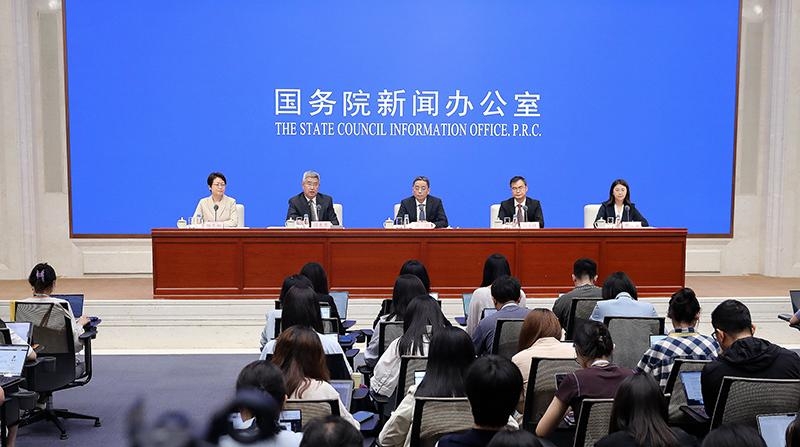Market News International:
Recently, the yuan has been appreciating against the U.S. dollar but remains weak against a basket of currencies. How does the PBC view the current performance of the yuan exchange rate? Is there upward pressure on the yuan against the U.S. dollar? And will the central bank take necessary measures to stabilize the exchange rate? Thank you.
Zou Lan:
Thank you for your questions; I will take these. Everyone is closely watching changes in the Federal Reserve's monetary policy. Recently, the growth rate of the U.S. economy has slowed, but the price level remains higher than the Federal Reserve's target. Furthermore, the tariff policy has increased uncertainty in the U.S. inflation trend, affecting the pace and path of the Federal Reserve's interest rate cuts.
The heightened volatility in the U.S. dollar index and U.S. Treasury yields has generated spillover effects across global financial markets. The dollar index has fallen from above 109 at the beginning of the year to around 97, a decline of 11%. The 10-year U.S. Treasury yield briefly rose above 4.8%, marking its highest level since December 2023, but has recently pulled back to around 4.4%. In comparison, China's financial market has shown strong resilience and has been generally stable. The yuan exchange rate against the U.S. dollar experienced some fluctuations in early April but quickly stabilized afterward. Since the release of the joint statement on the China-U.S. Economic and Trade Meeting in Geneva in May, the yuan exchange rate against the U.S. dollar has exhibited two-way fluctuations and remained stable below 7.2.
Multiple factors affect the exchange rate, such as economic growth, monetary policy, financial markets, geopolitics and risk events. Uncertainties persist regarding the future direction of the dollar, but China's domestic fundamentals continue to improve. This provides a solid foundation for the yuan exchange rate to maintain two-way fluctuations and overall stability. First, China's economy has maintained steady growth. GDP in the first quarter increased by 5.4% year on year, which is a good start. On April 25, the meeting of the Political Bureau of the CPC Central Committee made important arrangements concerning economic work, stating that China's economy will sustain the momentum of high-quality development. Second, the market expects the U.S. Federal Reserve to restart interest rate cuts in the year's second half. With major developed economies cutting rates, expectations are mounting for the Federal Reserve to follow suit. This will alleviate the China-U.S. monetary policy misalignment, leading to a narrowing interest rate differential between China and the U.S. Third, a basic equilibrium has been maintained in the balance of payments. In 2024, China's current account surplus represented 2.2% of GDP, within a reasonable and balanced range. China's financial market operates stably while steadily advancing its opening up. Yuan-denominated assets retain their appeal, with cross-border capital flowing in a two-way orderly manner. In the first five months of this year, the net capital inflow from non-bank sectors such as enterprises and individuals was approximately $100 billion. Fourth, significant progress has been made in the development of the foreign exchange market. Market participants have become more sophisticated, trading behaviors have become more rational, and market resilience has significantly increased. In the first half of the year, both the corporate hedging rate and the share of yuan-denominated cross-border trade settlements rose to approximately 30%, indicating a noticeable improvement in enterprises' ability to cope with external shocks.
China will not seek to obtain a global competitive edge through exchange rate depreciation. The PBC's stance on exchange rate policy is clear and consistent. We will continue to uphold the decisive role of the market in exchange rate formation and maintain exchange rate flexibility. At the same time, we will strengthen guidance over expectations, prevent risks of exchange rate overshooting and keep the yuan exchange rate generally stable and at an adaptive and balanced level. Thank you.


 Share:
Share: 




 京公網安備 11010802027341號
京公網安備 11010802027341號